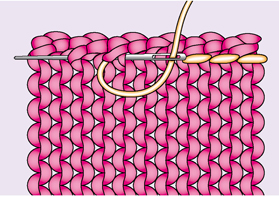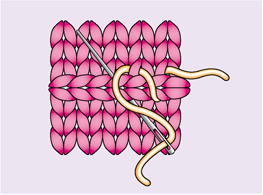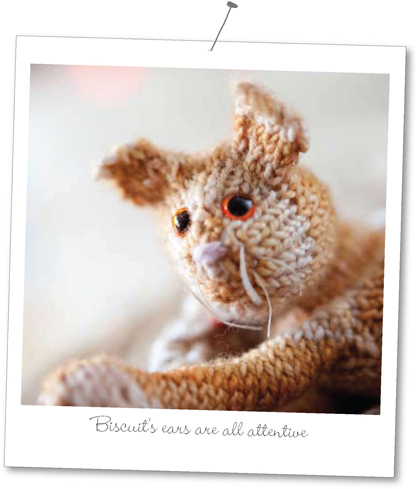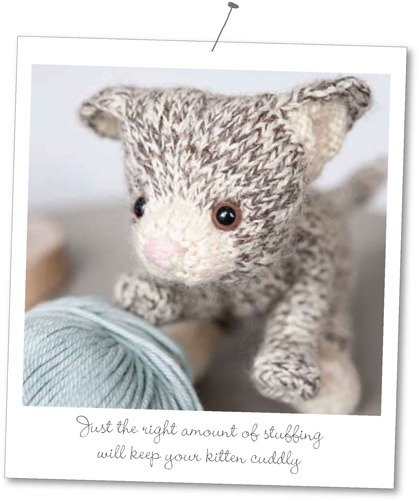Making up
There are various ways of sewing up knitting, so use whichever you like or suits the occasion best. Always use the same yarn you knitted with so the stitches are less visible. Often you will be able to use the long end you left when you cast on. It's best to use a darning or tapestry needle with a large eye and blunt end so that you don't split the yarn.
WEAVING IN ENDS
You will have some loose yarn ends from casting on and binding off, so weave these in first. One of the best ways to weave in the loose ends so they will be invisible is to thread the yarn end through a darning needle and sew it into the seam by passing the needle through the ‘bumps’ of the stitches on the wrong side of the work. Sew them in for about 1–2in (2.5–5cm) and then snip off any excess yarn.
BACKSTITCH (REVERSE SIDES OUT)
Put both knit sides (right sides) together so the wrong sides are facing you. Carefully make small stitches along the edge, taking the needle down for each stitch behind the end of the previous stitch. Make sure you are sewing in a straight line as close to the edge as possible. It might sound obvious, but it is very easy to pick up stitches that are further away from the edge than you think. You want the sewing to be as invisible as possible.

MATTRESS STITCH (KNIT SIDES OUT)
Put the two pieces of knitting next to each other, knit sides up and seams matching. Run the yarn through the centre of the first stitch on one piece of knitting, then down through the centre of the first stitch on the other piece of knitting. Next go through the second stitch on the first piece of knitting and down through the centre of the second stitch on the other piece. Continue in this way along the row, pulling up the stitches fairly tightly.


STUFFING YOUR PETS
Toy stuffing is an essential component for your knitted pets. You will be able to find a suitable brand at haberdashery and craft stores. Use stuffing that is specifically designed for toys so you can be sure it is safe for children. Check the safety logo before you buy it.
Don't stuff toys too fully or they will become solid and have no movement. You want your pets to be cuddly. You will probably find that your fingers are all you need to push stuffing into small or fiddly pieces, but you might also find tweezers useful.
SEWING IN FINAL ENDS
Once you have stuffed the toy, you will need to close the small opening in the middle of the seam. I knot together the two ends of the yarn used for sewing the seams, then thread the ends through the toy so that the knot is hidden and the ends are kept long. You don't want to cut the ends too short to avoid the knot coming undone.
STANDING YOUR PETS UP
I have designed these pets to look as much like the bird or animal they represent as I can, but yarn being yarn it can have its own mind about whether it wants to stand up or which way it wants to lie. So, if you feel it necessary, a little gentle persuasion may be needed.
To make Biscuit's ears extra perky, tame a pony's mane or give the little birds' legs standing power, for example, try a 50:50 solution of sugar (or PVA adhesive) and water. Make the solution with hot water to dissolve the sugar and then leave it to cool. Dab or paint the solution onto the knitted part you want to stiffen and then leave it to dry in the desired position.
To make sure a knitted pet will stand easily every time, insert a drinking straw into each leg before you sew it up. Stuff gently around the straw and particularly at the ends to stop it from poking through the knitting.
